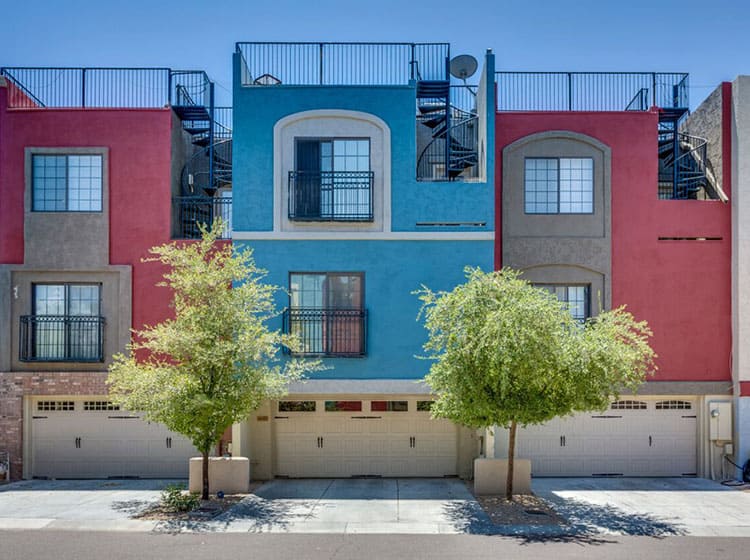To Guarantee The Success Of Your Painting Project, It Is Important To Be Familiar With The Significant Distinctions In Between Interior And Exterior Paint. Discover The Vital Info You Need Prior To Starting Your Task
To Guarantee The Success Of Your Painting Project, It Is Important To Be Familiar With The Significant Distinctions In Between Interior And Exterior Paint. Discover The Vital Info You Need Prior To Starting Your Task
Blog Article
Content By-Perkins Meyers
When you're picking between exterior and interior paint, it's necessary to recognize their basic differences that influence both performance and visual appeals. Interior paints are crafted for reduced VOC levels and smoother coatings, making them suitable for interior areas, while outside paints are designed to sustain severe climate condition and UV direct exposure. Each kind serves a distinctive function, yet knowing when to utilize one over the various other can significantly affect your job's end result. So, what elements should you think about when making your option?
Composition and Formulation
When picking in between interior and exterior paint, understanding their make-up and formula is critical. Inside paints generally have a reduced amount of volatile natural compounds (VOCs), making them safer for indoor air top quality. You'll notice they frequently have a smoother finish, which enhances their capacity to resist stains and enables simpler cleaning. They're designed to hold up against the rigors of indoor atmospheres, consisting of varying moisture levels and temperature level variations.
On the other hand, exterior paints are created to withstand harsher problems. They normally have greater degrees of pigments and additives to withstand fading from UV rays, as well as to stop mold and mold development. Their structure consists of much more binders and resins, which offer far better bond to surfaces revealed to the elements. This makes certain the paint can withstand rainfall, snow, and fluctuating temperatures without peeling or splitting.
Efficiency and Resilience
Assessing efficiency and durability is essential when choosing between interior and exterior paint. Interior paint is made for surface areas that experience much less damage. It typically stands up to fading and scuffing, making it ideal for living areas and bed rooms. Nonetheless, it might not stand up well in high-moisture locations like bathroom and kitchens without correct formulation.
On the other hand, outside paint deals with harsher problems. It's crafted to stand up to UV rays, rain, and temperature level fluctuations. This type of paint usually has additives that protect against mold and mildew and mildew development, ensuring long life in various environments. When you make use of outside paint, you can expect it to last several years longer than interior paint, provided it's applied appropriately.
An additional essential difference depends on the surface options. Inside paints commonly have a range of finishes for visual appeal, while outside paints focus on durability over luster. If you're seeking something that can deal with the components, outside paint is your best choice.
In contrast, if you're focused on indoor aesthetics with much less worry for severe conditions, interior paint could be suitable. Inevitably, your option needs to align with the certain demands of the setting.
Aesthetic Factors to consider
A fresh layer of paint can change an area, yet visual factors to consider play an essential duty in your choice in between exterior and interior alternatives. When you're picking paint, consider the state of mind you want to develop. Interior paint enables you to discover a larger variety of shades and coatings, enabling you to express your individual style and improve your home's ambiance. Whether you go with soft pastels or vibrant tones, the appropriate interior paint can make your rooms feel comfortable, dynamic, or peaceful.
On the other hand, outside paint requires to align with your home's style and the surrounding atmosphere. Here, you're not just making a design declaration; you're likewise considering aesthetic charm. Choosing shades that balance with your neighborhood can increase your home's value and aesthetic charm. https://residentialpaintersnearme64208.newbigblog.com/37458994/for-a-seamless-coating-it-is-essential-to-follow-these-essential-steps-when-dealing-with-outside-home-painters in mind that exterior paint is also based on fading and weather adjustments, so picking a timeless color can save you from regular repainting.
Ultimately, take into consideration exactly how each alternative fits your vision. By aligning https://interiorhomepaintersnearm68877.bloggosite.com/38060401/grasping-the-essential-differences-between-exterior-and-interior-paint-can-substantially-affect-your-job-it-is-necessary-to-acquaint-yourself-with-these-differences-before-you-begin-your-job with your desired aesthetic, you can create rooms that show your individuality while preserving performance.
Conclusion
When it concerns picking paint, comprehending the key distinctions in between exterior and interior options is crucial. Inside paints focus on aesthetic appeals and low VOCs, making them perfect for improving your interior rooms. In contrast, exterior paints are developed for resilience and climate resistance, protecting your home from the components. By considering your certain demands and the environment, you can confidently choose the right paint to achieve the appearance and longevity you want for your space.
